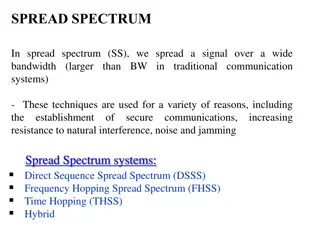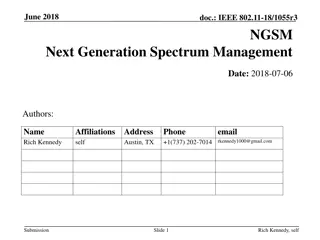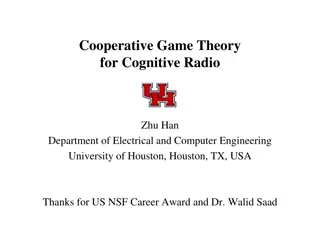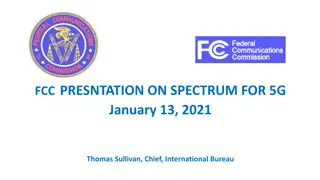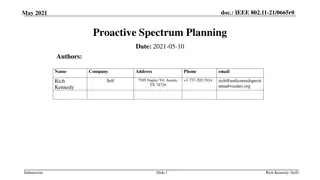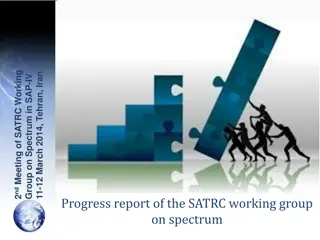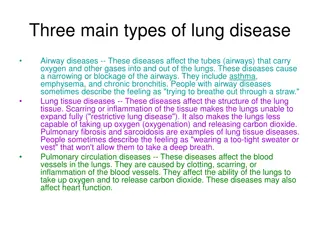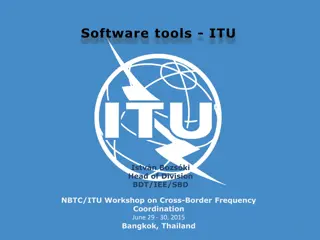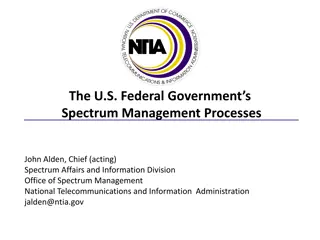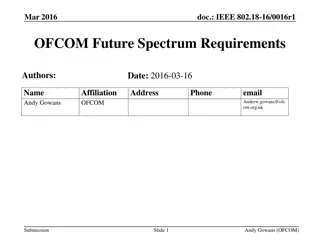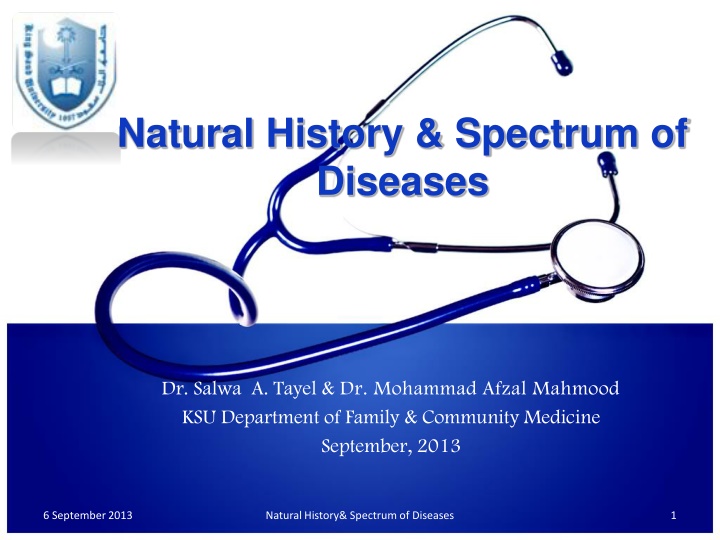
Understanding the Natural History and Spectrum of Diseases for Public Health
Explore the natural history and spectrum of diseases, describing the progression of diseases in individuals over time without intervention. Learn about key concepts such as induction, incubation, latency, detection, and outcomes of diseases. This in-depth analysis sheds light on the impact of diseases on public health.
Download Presentation

Please find below an Image/Link to download the presentation.
The content on the website is provided AS IS for your information and personal use only. It may not be sold, licensed, or shared on other websites without obtaining consent from the author. If you encounter any issues during the download, it is possible that the publisher has removed the file from their server.
You are allowed to download the files provided on this website for personal or commercial use, subject to the condition that they are used lawfully. All files are the property of their respective owners.
The content on the website is provided AS IS for your information and personal use only. It may not be sold, licensed, or shared on other websites without obtaining consent from the author.
E N D
Presentation Transcript
Natural History & Spectrum of Diseases Dr. Salwa A. Tayel & Dr. Mohammad Afzal Mahmood KSU Department of Family & Community Medicine September, 2013 6 September 2013 Natural History& Spectrum of Diseases 1
OBJECTIVES OF THE LECTURE OBJECTIVES OF THE LECTURE By the end of this lecture students will be able to: Describe natural history of diseases and their implications for public health. Describe spectrum of diseases and their implications for public health. 2 2 6 September 2013 Natural History& Spectrum of Diseases
Natural history of disease Natural history of disease refers to the progress of a disease process in an individual over time, in the absence of intervention. The natural history of a disease describes the course of the disease in an individual starting from the moment of exposure to the causal agents till one of the possible outcomes occurs. 6 September 2013 Natural History& Spectrum of Diseases 4 4 4
Natural history Phenomena Induction : time to disease initiation Incubation: time to symptoms (infectious disease) Latency: time to detection (for non- infectious disease) or to infectiousness 6 September 2013 Natural History& Spectrum of Diseases 5
Natural history of disease 6 September 2013 Natural History& Spectrum of Diseases 6 6 6
Natural history of disease 6 September 2013 Natural History& Spectrum of Diseases 7 7
Natural History of Disease Detectable subclinical disease Clinical Disease Outcome: Subclinical Disease Susceptible Host Stage of Recovery, Complications, Disability, or Death Diagnosis sought Point of Exposure Onset of symptoms Screening 6 September 2013 Natural History& Spectrum of Diseases 8
The problem The problem is that we might know about disease onset when symptoms occur but most likely we will only know about the disease when a person seeks care for the symptoms. In some situations an investigator will only become aware of a case after a diagnosis is made. 6 September 2013 Natural History& Spectrum of Diseases 9
Importance of studying Natural history of disease The understanding of this progression from disease onset to cure or death is important for epidemiologists. Natural history is as important as causal understanding for the prevention and control of disease. The earlier you can become aware of the attack the more likely you will be able to intervene and save lives. 6 September 2013 Natural History& Spectrum of Diseases 10
Spectrum of disease The idea that an exposure can lead to varying signs, symptoms and severity of the same disease in the population is the spectrum of disease. Why do we have varying degrees of severity or outcome? The outcome will depend on the interactions of host, agent and environmental factors. 6 September 2013 Natural History& Spectrum of Diseases 11 11 11
Classification of diseases according to clinical severity (spectrum of disease) 6 September 2013 Natural History& Spectrum of Diseases 12 12 12
Class A: Inapparent infection Examples: Tuberculosis, Polio, Hepatitis A, Meningitis, AIDS 6 September 2013 Natural History& Spectrum of Diseases 13 13 13
Class B: Classic cases Examples: Measles, Chickenpox 6 September 2013 Natural History& Spectrum of Diseases 14 14 14
Class C: Severe or Fatal infections Examples: Rabies, Hemorrhagic fevers caused by Ebola and Murberg viruses. 6 September 2013 Natural History& Spectrum of Diseases 15 15 15
Implications for public health 6 September 2013 Natural History& Spectrum of Diseases 16 16 16
The relation of severity of illness to disease statistics. 6 September 2013 Natural History& Spectrum of Diseases 17 17 17
The pyramid and iceberg of disease 1 Diseased, diagnosed & controlled Diagnosed disease 2 Diagnosed, uncontrolled 3 Undiagnosed or wrongly diagnosed disease Undiagnosed or wrongly diagnosed disease 4 Risk factors for disease 5 Free of risk factors 6 September 2013 Natural History& Spectrum of Diseases 18 18 18
Iceberg Phenomenon Cases of illness correctly diagnosed by clinicians in the community often represent only the tip of the iceberg. Many additional cases may be too early to diagnose or may remain asymptomatic. Examples: Tuberculosis, meningitis, polio, hepatitis A, AIDS. The risk is that persons with in-apparent or undiagnosed infections may be able to transmit infection to others. 6 September 2013 Natural History& Spectrum of Diseases 19 19 19
Implications of the concepts of natural history and spectrum of disease Persons with in-apparent or undiagnosed infections can transmit infections to others. Control measures must be directed toward all infections capable of being transmitted to others; both clinically apparent cases and those with in-apparent or undiagnosed infections. 6 September 2013 Natural History& Spectrum of Diseases 20 20 20
Reference books Reference books Principles of Epidemiology in Public Health Practice. Third Edition. An Introduction to Applied Epidemiology and Biostatistics. Centers for Disease Control and Prevention (CDC) Gordis L. Epidemiology. 2009 6 September 2013 Natural History& Spectrum of Diseases 21



